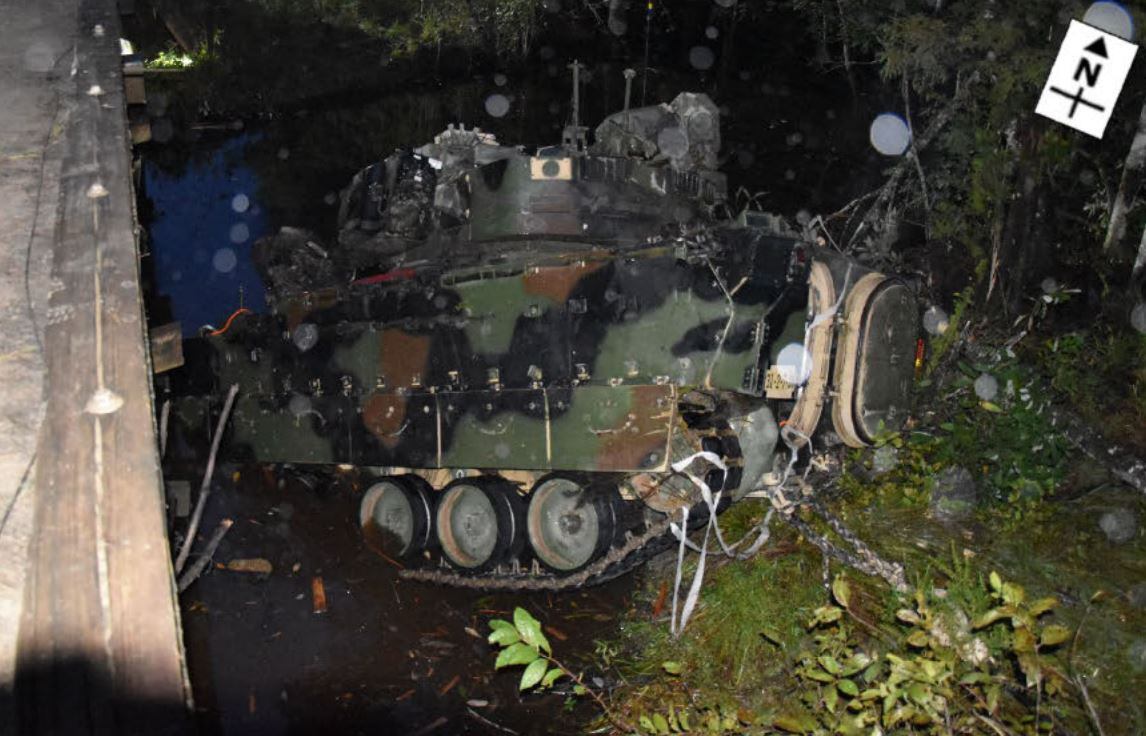Too many young Marines and soldiers continue to die, needlessly, in fully preventable training accidents, as a deep-dive inquiry report confirmed in July.
The independent Government Accountability Office was asked by the House Armed Services Committee of Congress, 21 months ago, to carry out a decadelong investigation into this crisis.
The GAO team made some good recommendations.
However, these need to be strengthened and result in immediate- and medium-term safety reforms if the high death rate and life-altering injuries are to be reduced significantly.
Recommendations by the GAO are too short on specific remedies. Only strong Congressional and public action ordering the Department of Defense to improve safety will lower the shocking death toll.
From 2010–2019 there were more than 3,700 tactical vehicle noncombat accidents in the Army and Marine Corps, 123 of them resulting in lost lives.
Vehicle rollovers were the major cause of death, resulting in at least 50 percent of fatalities in the Army and Marine Corps.
A dozen men or women on average continue to die every year. Deaths, plus horrific amputations, and traumatic brain injuries are caused when:
• safety on roads and ranges is neglected and lethal hazards are not identified.
• aging vehicles, which should not leave the ramps or should be scrapped, continue to be deployed.
• inadequate driver/operator training for high risk off-road maneuvers, especially in the dark or in bad weather, is the norm.
Ironically, the Marine Corps and the other services have long had standing orders that would reduce the frequency of these fatalities and terrifying physical injuries.
These orders have been disregarded by senior leaders tasked to execute them. This shows a shameful lack of leadership, particularly by those with star rank.
The number of Marine Corps’ training simulators initially fielded from 2006 on, specifically boosted by Congressional funds, has plunged from more than 90 across the Corps, to less than 50 that remain in operating condition.
A weak policy on training requirements for drivers, and a contradictory policy on escape training for passengers, results in confused and muddled money allocation for training. In the wake of major accidents the chain of command is blamed. But general officers and admirals often are given a pass and are not held accountable.
There are clear remedies in the GAO report, but we have added others:
• Identifying hazards on training terrain, clearly marking them on maps/GPS systems, and training grounds.
• Safety-kits added to vehicles, e.g. Humvees, most of which do not have anti-lock brakes, electronic stability controls or other rollover mitigation methods that have been on passenger cars for decades.
• Many more vehicle simulators preparing for rollover prevention training and escape.
• Cameras/infrared equipment/tilt-meters, multiple radar options.
• Tracking and speed monitoring/recording devices on vehicles.
• Better communications, since radio or cell phone black spots plague ranges, such as at Camp Pendleton, California.
• Far stronger seat belts/safety harnesses, which must be worn.
• Fastening down of ammunition boxes/loose heavy equipment, which can badly injure troops.
• A uniform reporting system shared by all military services, requiring detailed publication of not just deaths, but serious injuries/hospitalizations, and indeed recording of any vehicle rollover.
• Crucially, penalty-free empowering of noncommissioned officers and junior officers to order a halt to ailing vehicles being deployed, and without personnel suffering career damage from superior officers.
Above all, it is time, after decades, even generations, that the Pentagon ordered manufacturers to design vehicles that do not easily roll over.
Each month, a young man or woman, or several, die in vehicle rollovers. Their deaths produce a cruel fallout for husbands, wives, fiancés, fiancées, girlfriends, parents, children, extended families and brothers and sisters in arms.
On July 30, 2020, eight Marines and a Navy corpsman from Camp Pendleton, California, died appalling drowning deaths as their badly ailing 36-year-old amphibious vehicle took on water and plunged hundreds of feet onto the ocean floor, trapping them from escape. That death trap should never have left the beach.
This critical problem is solvable. And flag officers tiresome litany before Congress that, “We’ve got this now,” is unacceptable.
Mourning families have little trust that action follows words.
Verifying real change lies now with our elected representatives in the Armed Services Committees of the Senate and House.
Michael McDowell is a fellow in the International Security Program of New America.
His son, Marine 1st. Lt H. Conor McDowell, 24, was killed in the rollover of his light armored vehicle on May 9, 2019, at Camp Pendleton, California. Range safety had failed to identify a massive crater completely hidden by high grass and brush.
Marine Col. Walter Yates (retired) served as an acquisition program manager for training systems with a specialty in modeling, virtual environments and simulation.
The opinions expressed in this commentary do not necessarily reflect the views of Marine Corps Times or its staff. If you would like to respond, or have a commentary on another Marine Corps topic, please contact Editor Andrea Scott at ascott@militarytimes.com.





